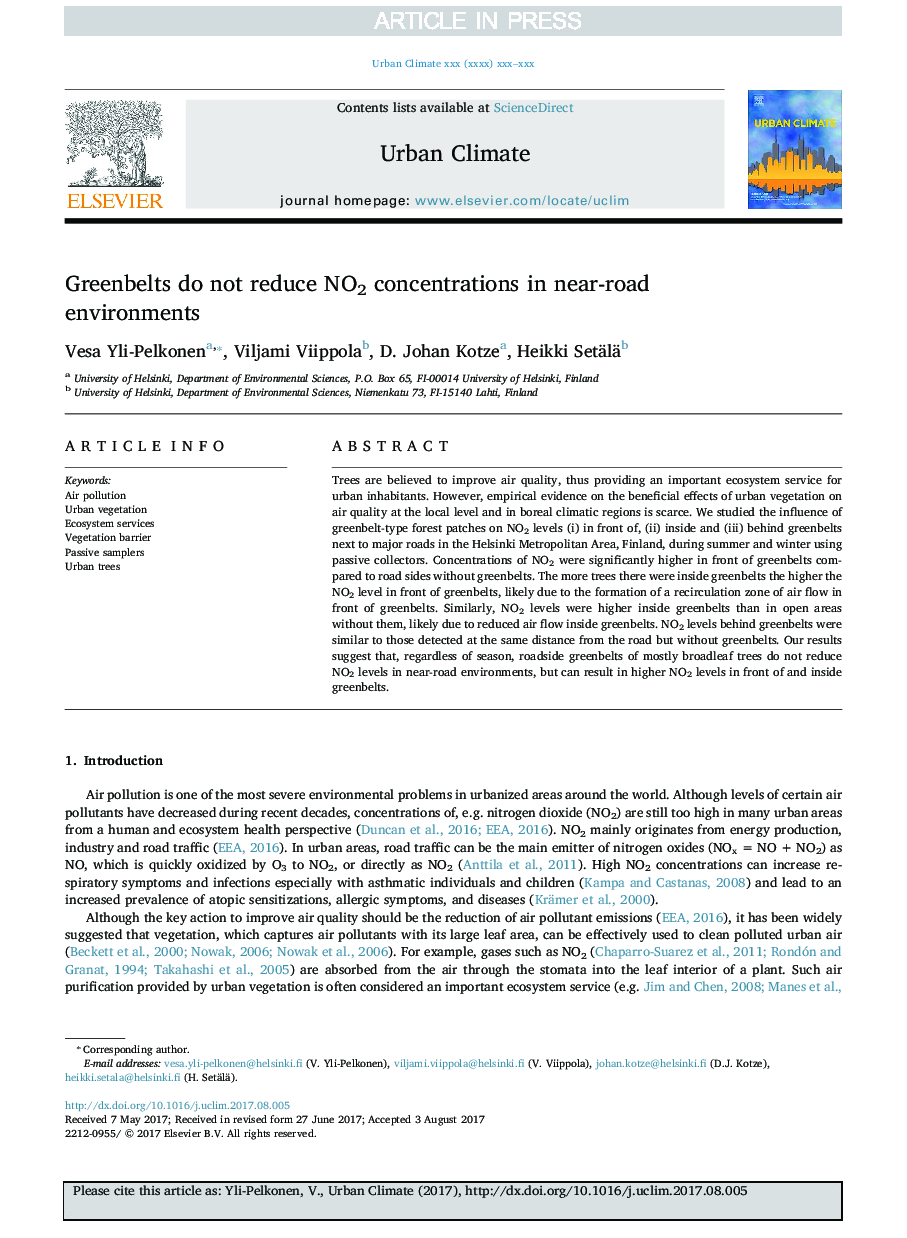| Article ID | Journal | Published Year | Pages | File Type |
|---|---|---|---|---|
| 4762367 | Urban Climate | 2017 | 12 Pages |
Abstract
Trees are believed to improve air quality, thus providing an important ecosystem service for urban inhabitants. However, empirical evidence on the beneficial effects of urban vegetation on air quality at the local level and in boreal climatic regions is scarce. We studied the influence of greenbelt-type forest patches on NO2 levels (i) in front of, (ii) inside and (iii) behind greenbelts next to major roads in the Helsinki Metropolitan Area, Finland, during summer and winter using passive collectors. Concentrations of NO2 were significantly higher in front of greenbelts compared to road sides without greenbelts. The more trees there were inside greenbelts the higher the NO2 level in front of greenbelts, likely due to the formation of a recirculation zone of air flow in front of greenbelts. Similarly, NO2 levels were higher inside greenbelts than in open areas without them, likely due to reduced air flow inside greenbelts. NO2 levels behind greenbelts were similar to those detected at the same distance from the road but without greenbelts. Our results suggest that, regardless of season, roadside greenbelts of mostly broadleaf trees do not reduce NO2 levels in near-road environments, but can result in higher NO2 levels in front of and inside greenbelts.
Related Topics
Physical Sciences and Engineering
Earth and Planetary Sciences
Earth and Planetary Sciences (General)
Authors
Vesa Yli-Pelkonen, Viljami Viippola, D. Johan Kotze, Heikki Setälä,
